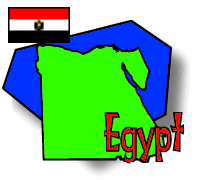Word of the Day: Bikam? — "How much?"
Person of the Day:
| On Monday, November 17, 1997, 58 foreigners and four Egyptians were killed when six or more Islamic militants attacked visitors at the funerary temple of Queen Hatshepsut on the west bank of the Nile just north of Luxor. The BikeAbout team would like to take this moment to remember those whose lives were lost and to offer our deepest condolences to their friends and families who continue to suffer as a result of the loss. Violence of any kind, especially when brought upon the innocent, should never be tolerated. Never. Nor should the reasons why such violence occurs be ignored. It is only through open and honest dialogue that different people will begin to understand how and why people are different and how and why to bridge their differences. |
Place of the Day: Egyptian Museum ![]()
Tech Fact of the Day: Egyptians use a different set of numbers.

Group Dispatch, November 18–19

Questions? Ask Ethan ![]() !
!
Return to Fast Facts
 |
 |
 |
 |
 |
|
Itinerary/ Journal |
Discussions |
About Egypt |
eDscape Projects |
Scrapbook |
|
|
|
|
|
|
Internet access while in Egypt was provided by InTouch Communications Services. |
Copyright 1997-2004 BikeAbout. All rights reserved.
